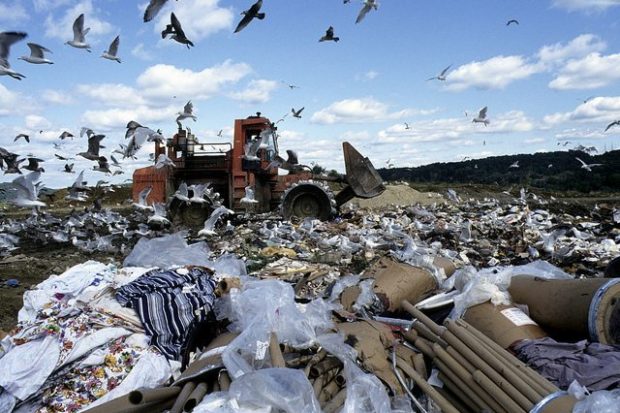
By Tom Frantz
There is a bill before the current legislature in California that is mislabeled as a project appropriate for greenhouse gas reduction funding. This bill is numbered AB590 and is sponsored by Assembly Member Rudy Salas (D–Bakersfield), who serves parts of Kern and Tulare counties.
It authorizes cap-and-trade auction revenue to be given to biomass incinerators in the San Joaquin Valley so that they can continue to burn material from Los Angeles and Bay Area landfills. This biomass includes street sweepings, demolished building timber, tree and bush trimmings, pallets, plywood and old furniture. It is allowed to contain up to 2% foreign material by weight such as rubber, metals and plastic. The burning of this material is a huge pollution source for a region with the dirtiest air in the nation.
One excuse for this subsidy is that these incinerators are producing electrical energy for the state electrical grid that qualifies as 100% renewable energy and therefore qualifies as a viable part of California’s greenhouse gas reduction strategies. However, burning biomass to create electricity is inefficient and dirty. Burning coal would produce more energy and less pollution for the same mass of fuel.
Obviously, for the biomass incinerators, it is expensive to truck the needed millions of tons of fuel over long distances. On top of that, the amount of energy produced is relatively small so they are not paid much for all this effort. So, these facilities claim they need some subsidy payments for every unit of electricity they produce because they cannot compete with other renewable sources such as wind and solar.
The second excuse for this subsidy is that around 25% of the total fuel supply for these incinerators is from almond orchards that are removed periodically. Open burning is banned already for orchard removal material. That means almond farmers have to pay to chip and shred the trees and pay someone to haul them away. Do we really need a subsidy to lower these costs for these poor almond farmers?
The shredded and chipped almond trees represent clean biomass in the sense there is virtually no paint, glue, varnish, metals, chemicals, plastic or rubber contamination in the mix. Unfortunately, the subsidy does not distinguish between which types of fuels are being burned and where they come from. All the urban waste will end up getting the same subsidy as the agricultural waste.
The claim that agricultural waste has to be burned in dirty incinerators so it will not be burned in the open air is a false dichotomy. There is another choice. There are other more beneficial ways this waste can be used. Basically, this clean agricultural waste should be returned to the soil.
When biomass of any type is burned, we get air pollution and massive amounts of CO2 are released into the atmosphere. Even though new trees will eventually absorb some of this CO2, it would be far better to put this clean biomass back into the soil to help grow new trees and reduce fertilizer needs. Then, there is a real reduction in greenhouse gases in the atmosphere and air pollution has been minimized.
Sequestering biomass in the soil has tremendous potential to reduce the impacts of climate change. Burning this biomass has no benefits in the short term when we most need to make dramatic reductions of CO2 emissions.
Salas claims his bill helps to fulfill the requirements surrounding AB32, which is California’s Global Warming Solutions Act. But he has failed to read the explicit language of AB32, which states no solution to global warming, or the reduction of greenhouse gases, should contribute to, or make worse, an already existing air quality problem.
Burning trash from Los Angeles to make electricity for the state pollutes our air here in the Valley. The long haul trucking also pollutes our air. It is illegal to subsidize this practice according to the language of AB32. Burning our own local agricultural waste also pollutes our air.
In the end, we need to stop all burning in the San Joaquin Valley. Pouring money into the practice is a giant step backward.
*****
Longtime clean air advocate Tom Frantz is a retired math teacher and Kern County almond farmer. A founding member of the Central Valley Air Quality Coalition, he serves on the CVAQ steering committee and as president of the Association of Irritated Residents. CVAQ is a partnership of more than 70 community, medical, public health, environmental and environmental justice organizations representing thousands of residents in the San Joaquin Valley unified in their commitment to improve the health of Californians. For more information, visit www.calcleanair.org.
